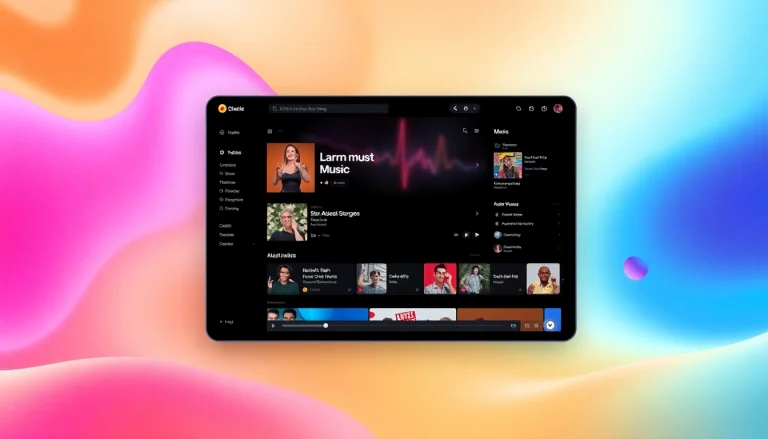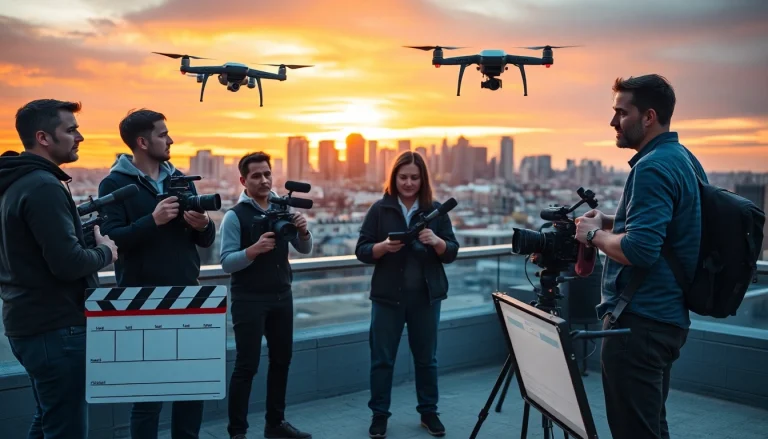Understanding Music Pitching
What is Music Pitching?
Music pitching is the process by which artists, managers, or promoters present their music to various platforms, curators, and influencers with the goal of getting their tracks featured on playlists, films, commercials, or other media. This involves compiling music submissions in a way that highlights the artist’s work while also articulating why the song is beneficial for commercial use or attractiveness to audiences. The effective use of music pitching strategies can drastically increase an artist’s visibility and listener engagement.
The Importance of Music Pitching for Artists
Pitching music is essential for artists looking to build their audience and gain recognition within the competitive music industry. With the rise of streaming services and digital music consumption, traditional distribution and promotional methods have evolved. Artists now have access to a myriad of platforms to showcase their music, but with this opportunity comes the necessity of effectively pitching to capture attention.
By thoughtfully crafting a pitch, artists can gain placements on influential playlists, earn media coverage, and connect with key players in the industry, potentially leading to opportunities such as live performances or collaborations. In an age where content oversaturation is rampant, an effective pitch can be the differentiator between fading into obscurity and achieving breakthrough success.
Common Challenges in Music Pitching
Artists may face several challenges when it comes to pitching their music. These include:
- Noise in the Market: With countless submissions flooding curators’ inboxes, standing out can become quite complicated.
- Understanding the Audience: Not all pitches are created equally, and artists need to tailor their submissions to fit the preferences of the recipient.
- Self-Promotion Fatigue: Constant self-promotion can lead to burnout for artists, especially if they see little to no reward for their efforts.
- Technical Know-How: Many artists are creative rather than administrative and may struggle with the aspects of crafting a professional pitch.
Preparing Your Music for Pitching
Choosing the Right Tracks to Pitch
When selecting tracks to pitch, artists should consider both the quality of the music and the target audience. A good starting point is to identify tracks that resonate harmoniously with a particular genre or playlist theme. It helps to:
- Review your catalog and shortlist tracks that have received positive feedback from early listeners.
- Consider the current music trends, ensuring that your selected tracks align with what listeners are currently seeking.
- Think about the unique message or story behind each track, as this can provide context that makes it more attractive to curators.
Creating a Pitching Plan
Launching a successful music pitching campaign requires organization and strategy. A pitching plan should outline:
- Target List: Compile a list of playlists, blogs, and music industry contacts to whom you will be pitching.
- Timeline: Define a schedule that allows for adequate preparation, execution, and follow-up for each pitch.
- Personalization: Develop template pitches that can easily be personalized to resonate with each specific recipient.
Essential Tools for Music Pitching
A variety of tools can assist in the music pitching process:
- Submission Platforms: Tools like SubmitHub or Groover allow artists to pitch directly to curators.
- Email Tools: Using email management tools can streamline communication and maintain organization for pitch outreach.
- Social Media: Social platforms can help in engaging with curators, creating a broader network and fostering relationships.
Crafting Your Pitch
Writing Compelling Pitch Emails
Your pitch email is the first impression curators will have of your music, so it’s crucial to make it count. Here are some tips for crafting effective emails:
- Stay Concise: Keep the email brief and to the point, ideally no longer than a few paragraphs.
- Personalize: Add a personal touch by mentioning why you are reaching out to that specific curator.
- Include a Call to Action: Encourage a specific action, whether it’s listening to the song or getting in touch for further discussion.
Highlighting Unique Selling Points (USPs)
Every artist has unique qualities that can intrigue curators. When crafting a pitch, it’s critical to highlight your USPs:
- Sound: Describe your musical style and influences—what makes you different from others?
- Story: Provide your narrative; why you created this project, what it means to you, and how it connects with listeners.
- Achievements: Mention prior successes, features, or notable performances to reinforce your viability.
Including Professional Press Kits
A well-crafted press kit can provide curators with all the information they need. It should include:
- Biographical Information: A brief history of your musical career and accomplishments.
- Music Samples: Links to your tracks, preferably hosted on platforms like SoundCloud or Spotify.
- Images and Videos: High-quality images and links to live performances can enhance your visual appeal.
Strategies for Effective Music Pitching
Networking with Curators and Influencers
Building relationships is at the heart of successful music pitching. Here are ways to network effectively:
- Attend Industry Events: Participate in conferences, workshops, and shows to meet curators and other artists.
- Engage on Social Media: Follow and interact with curators on platforms like Twitter and Instagram, showing genuine interest in their content.
- Offer Value: Share their work or provide meaningful comments on their posts to build rapport.
Leveraging Social Media for Pitching
Social media can amplify your pitching efforts through strategic outreach:
- Post Engaging Content: Share behind-the-scenes content or stories that resonate with your music to captivate an audience.
- Utilize Paid Advertising: Consider targeted advertisements to promote your new releases to specific demographics.
- Join Music Groups: Participate in online forums and groups where music industry players congregate; this can provide insights and opportunities.
Using Analytics to Optimize Your Pitch
Analytics play a crucial role in refining your pitch strategy. Tools like Spotify for Artists provide data on listener demographics and streaming behaviors. By analyzing this information:
- Identify Trends: Recognize which songs perform best based on genre, popularity, and listener engagement.
- Adjust Targeting: Use insights to tailor who you pitch to and when, leading to more effective submissions.
- Measure Engagement: Track how recipients respond to your pitches and adjust your strategies accordingly.
Measuring the Success of Your Pitch
Tracking Engagement and Feedback
Continually assess how your pitches are received. Look for metrics and feedback such as:
- Response rates to your emails and messages.
- Placement of your tracks on playlists.
- Increased followers or listeners as a result of your outreach.
Adapting Your Strategy Based on Results
Music pitching should be an iterative process. Based on the success of your previous pitches, don’t hesitate to tweak your approach:
- Refine Your Pitch: Based on feedback, modify your email style or content.
- Switch Target Audiences: If certain curators aren’t responding, consider reaching out to different playlists or blogs.
- Continuously Improve: Seek mentorship or resources that can provide further insights into improving your pitching strategy.
Case Studies of Successful Music Pitches
Analyzing successful pitches can provide critical insights and inspiration. For instance, certain artists have managed to garner mainstream attention through strategic pitching:
- The artist H.E.R. used targeted social media engagement alongside personalized emails to secure placements in influential playlists, which contributed to her rapid rise.
- Bruno Mars highlights the power of engaging press kits by pairing rich visual content with compelling narratives that resonate with curators.
Examining these examples emphasizes the necessity of creativity, professionalism, and relatability in pitching, all essential for navigating the modern music landscape.








